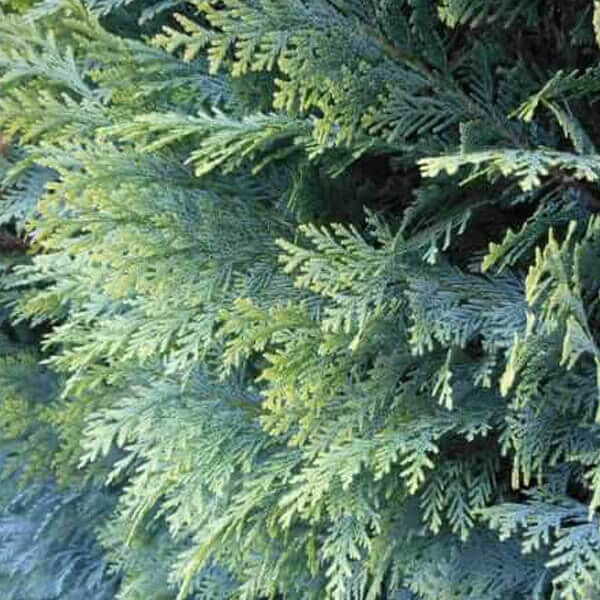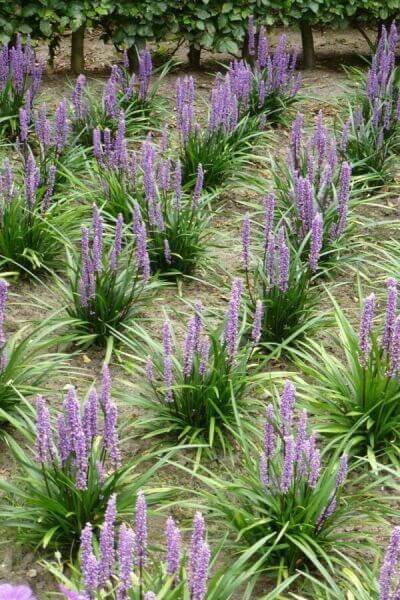Best Hedging Plants For Lush Borders
Enhance your garden's allure with lush hedge ranges such as Yew (Taxus), Thuja, Laurel, Photinia, and Bamboo, commemorated for their structural integrity and environmental advantages.
Yew and Thuja provide evergreen coverage and winter season strength, while Laurel offers quick growth and broad, aromatic leaves.
Photinia includes seasonal appeal with its lively red foliage, and Bamboo provides a low-maintenance, tranquil atmosphere.
These hedges enhance air quality, reduce noise, and create tranquil, private areas.
Proper planting, spacing, and upkeep ensure vigorous growth and eco-friendly consistency.
Explore how these lavish ranges can elevate your garden's beauty and wellness.
Secret Takeaways
Change Your Garden With Lush Hedge Varieties
- Select Yew for its dense, evergreen growth and unequaled longevity.
- Go with Laurel for its quick growth and broad leaves, ensuring quick privacy.
- Select Photinia for its lively seasonal foliage, which turns a striking dark red.
- Utilize Bamboo for a low-maintenance, winter-hardy hedge with visual appeal.
- Space plants 2-3 per meter and prune routinely for ideal development and health.
Popular Hedge Plants
When changing a garden with rich hedge varieties, it's important to consider popular hedge plants such as Yew, Thuja, Laurel, and Photinia due to their distinct qualities and benefits.
Yew (Taxus) is extremely esteemed for its longevity and dense, green growth, making it a prime choice for enduring landscapes.
Thuja is noted for its evergreen foliage and robust winter season strength.
Photinia includes seasonal vibrancy with red leaves that darken with time, developing vibrant visual appeal.
Laurel uses fast growth and fragrant, broad leaves, perfect for fast privacy.
Additionally, Bamboo is an excellent choice for atmosphere, providing a low-maintenance, winter-hardy choice that enhances the garden's visual with its classy, swaying walking sticks.
These selections deal with a range of horticultural needs and preferences.
Advantages of Garden Hedges
Garden hedges provide a wide range of advantages, making them an important addition to any landscape. These natural barriers are economical to implement and supply considerable wind protection, boosting air flow and adding to noise decrease. The thick foliage of hedges like Thuja and Beech ensures personal privacy by obstructing presence, creating a remote and serene environment.
Hedges also play a crucial function in microclimate regulation, offering a stable environment that promotes plant development and reduces temperature level fluctuations. Their intricate leaf structures filter contaminants, enhancing air quality and contributing to a much healthier garden environment.
Furthermore, hedges stand out in noise decrease, absorbing and deflecting acoustic waves to lower ambient sound levels. This dual performance of providing both acoustic and visual personal privacy enhances the general serenity and visual appeal of any garden.
Planting and Maintenance Tips
For a successful hedge, precise preparation of the planting location is crucial. Guarantee the soil has appropriate pH and drain to support strong root advancement.
Area the plants properly for the picked types. Water the hedge frequently during its initial growth phase, adjusting as needed with seasonal changes.
Implement a systematic pest control and disease prevention technique, using chemical or organic treatments when required. Regularly inspect for aphids, mites, and fungal infections.
Apply mulch to retain moisture and reduce weeds. Seasonal pruning promotes thick growth and air circulation, important for plant health.
Following these guidelines will help you cultivate a lively, well-maintained hedge that boosts the appeal of your garden.
Spacing and Cutting Guidelines
Spacing and Trimming Standards
Correct spacing and trimming are important for cultivating healthy, visually appealing hedges. Adequate spacing makes sure each plant gets sufficient nutrients, light, and air flow.
Follow these guidelines for optimum hedge maintenance:
- Spacing: Position hedge plants 2-3 plants per meter to encourage robust development.
- Pruning Strategies: Routine pruning is important for maintaining wanted hedge height and shape. Trim brand-new growth in summer and cut down older wood during winter season.
- Seasonal Care: Adjust cutting schedules and techniques according to seasonal requirements to ensure plant health.
- Hedge Height: Frequently screen and trim to maintain the preferred hedge height and achieve consistent visual appeals.
Sticking to these steps will ensure your hedge grows, improving both the appeal and functionality of your garden.
Selecting the Right Hedge
Choosing the Right Hedge
Choosing the proper hedge involves assessing aspects such as mature height, foliage density, and environmental strength. Successful hedge plant selection requires comprehending each types' growth qualities and site-specific flexibility.
For example, Yew (Taxus) offers outstanding durability and dense growth, while Thuja is noteworthy for its winter season strength. In addition, considering maintenance requirements is essential; fast-growing species like Laurel or Privet need routine cutting, whereas low-maintenance options like Bamboo or Ivy might be preferable for those seeking minimal upkeep.
Environmental elements such as soil type, light schedule, and wetness conditions must likewise direct the selection process. This cautious method guarantees the chosen hedges will flourish, providing both practical and visual advantages to the garden landscape.
Shipment and Planting Suggestions
To guarantee your hedge plants grow, they need to be delivered by specialized couriers and planted quickly upon arrival.
Follow these important steps for successful planting:
- Soil Preparation: Improve the soil with raw material to enhance drain and nutrient content.
- Planting Depth: Produce a trench twice the width and equivalent to the depth of the root ball.
- Watering Strategies: Water thoroughly after planting, keeping the soil consistently wet however not saturated.
- Mulching: Apply a layer of mulch to maintain moisture and suppress weeds.
Consumer Assistance and Service
Given the crucial function of timely assistance in horticultural pursuits, our consumer support group is offered six days a week through telephone, e-mail, and social networks to offer skilled recommendations and swiftly resolve any concerns. Their devotion to fast response times makes sure customer fulfillment by fixing queries associated with plant health, optimal planting techniques, and upkeep schedules.

Accessibility
-------------------
Within 24 hours
This comprehensive support group, strengthened by an outstanding 9.3/ 10 customer score, highlights our commitment to boosting the gardening experience for each client.
Regularly Asked Questions
The Length Of Time Does It Take for Hedge Plants to Establish?
Hedge plants usually need one to three years to end up being fully developed, with the exact period differing by species and growing conditions.
Reliable care during this important period is necessary for robust growth. Constant watering, alert weed control, and proper fertilizer application are critical in promoting strong root advancement.
For example, fast-growing species like Laurel might establish quicker, while slower-growing ranges such as Yew might take longer. Persistent upkeep speeds up the establishment process, leading to thick and healthy hedges.
What Are the Best Hedge Plants for Personal Privacy?
The concern of the very best hedge plants for privacy involves examining evergreen and deciduous alternatives.
Evergreen hedges like Thuja, Laurel, and Cypress provide year-round coverage, guaranteeing constant personal privacy.
In contrast, deciduous hedges such as Beech offer seasonal privacy, shedding leaves in chillier months.
Secret upkeep tips for privacy hedges include regular trimming, fertilizing in spring, and appropriate spacing-- usually 2 to 3 plants per meter.
In addition, constant watering and thorough weed elimination are vital for promoting healthy, thick development.
Can Hedge Plants Bring In Wildlife to My Garden?
Yes, hedge plants can bring in wildlife to your garden by offering necessary advantages like shelter, food, and nesting websites, consequently boosting regional biodiversity. For example, yew, holly, and laurel are outstanding for attracting birds, while ivy supports a variety of bugs.
However, it is necessary to note that there are some disadvantages, such as increased maintenance to manage bugs and routine upkeep. Carefully picking and preserving hedge varieties can assist stabilize these downsides and benefits, eventually promoting a dynamic and sustainable environment in your garden.
Are There Any Blooming Hedge Plants Available?
Yes, there are flowering hedge plants offered that can enhance the appeal of your garden.
For example, Elaeagnus, likewise here called Olive Willow, produces aromatic white flowers in the fall, adding a touch of sophistication.
Photinia, another popular choice, showcases lively red leaves that develop into an abundant green, producing a vibrant visual effect throughout the seasons.
To make sure these plants flourish, it's vital to practice appropriate pruning strategies and seasonal maintenance, such as cutting new development in the summer season and cutting back in the winter season.
These measures will help maintain the health and aesthetic appeal of your blooming hedges.
How Do I Prevent Pests in My Hedge Plants?
To avoid bugs in hedge plants, employ natural insect control approaches and maintain appropriate hedge care. Present beneficial bugs like ladybugs, which victimize damaging pests, to produce a well balanced environment.
Frequently inspect your hedges for signs of invasion and without delay eliminate any affected parts to avoid the spread. Make sure the health of your hedges by using well balanced fertilizers and supplying adequate water.
Utilize mulching to retain soil moisture and appropriate spacing to minimize plant stress and promote robust growth. These practices collectively help in lessening insect problems and preserving a healthy hedge.
Conclusion
In essence, selecting the best hedge varieties such as Yew, Thuja, and Laurel can transform any garden into a peaceful haven. These plants provide year-round greenery, boost visual appeal, and deal useful benefits like noise decrease and wind defense.
Correct planting methods, accurate spacing, consistent watering, and seasonal cutting are essential for ideal growth.
Trustworthy delivery services and expert customer assistance guarantee a seamless experience from purchase to planting, making it simpler than ever to raise your outside space.
Garden hedges offer a plethora of advantages, making them a valuable addition to any landscape. These natural barriers are economical to implement and supply substantial wind defense, improving air circulation and contributing to sound reduction. The thick foliage of hedges like Thuja and Beech guarantees privacy by blocking visibility, producing a remote and tranquil environment.

Pruning Methods: Regular pruning is essential for keeping preferred hedge height and shape. Trim new development in summertime and cut back older wood during winter season.